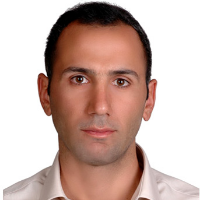Estimation of irrigated winter wheat and barley production potential by FAO method
Production potential refers to the yield of a particular cultivar of a crop in a given environment with sufficient growth sources and free of pests and diseases, which is determined only by solar radiation and the temperature of that environment.Understanding potential production helps direct agricultural research to identify growth-limiting factors and, consequently, promote policy-making and reduce the yield gap (Hackman et al., 2013).Today, several models based on the rate of evaporation of transpiration, radiation and heat are used by researchers to estimate the potential for dry matter production in plants. Among these, we can mention the model of FAO (thermal radiation), Wachningen, Albero, Dust, Episim, Wafest and Aquacrop (Salo et al., 2016). In Iran, from the FAO model to evaluate the potential of cotton production in Qom province (Seyed Jalali, 2004), alfalfa in Qazvin province (Taati et al., 2015), sugar beet in Lorestan and Silakhor plain (Sohrabi and Chegini, 2011), corn It has been used in Shahrekord (Etedali et al., 2012). For Hashtgerd region (Noshabadi et al., 2016) and Dasht-e Moghan (Izadfard et al., 2017), the yield potential of wheat and barley based on radiation and heat of the region has been studied by FAO model.Therefore, the present study aimed to determine the potential yield of winter wheat and barley based on radiation and heat of the study area (Abhar) through plant characteristics of high-yielding cultivars of two major wheat and barley plants under optimal growth conditions.
The study area was 30247 hectares in Abhar city (located in Zanjan province), which is located between the eastern longitude 49̊ 10́ to 49̊ 25́ and between the northern latitude 36̊ and 36̊ 15́. Approximately 3662 hectares of land are not cultivable due to high roughness, steep slopes and industrial structures. According to the climatic information of Khorramdareh synoptic station, the closest station to the study site, this region has a Mediterranean climate with cold and humid winters versus mild and dry summers. The average minimum and maximum annual temperatures are 0.1 and 12.7 degrees Celsius, respectively (average annual temperature is 12.7 degrees Celsius). Total precipitation, effective precipitation (relationship 4 and 5) and potentialtranspiration evaporation per year were 334, 102.8 and 1329.95 mm, respectively.Estimation of crop water requirement, using cropwat software version 8, the crop water requirement in the growth cycle was calculated. In cropwat software, the plant coefficient is calculated daily. Planting date According to the information of local farmers, the harvest date of summer crops and also the date of occurrence of early autumn frosts were selected, based on which, the first half of October 15 was the best time to plant wheat and winter barley. In addition, the length of each of the four stages of growth (initial, plant development, intermediate and final) based on the climate of the region (semi-arid) along with their related plant coefficients was extracted from FAO Journal No. 56 Irrigation and Drainage (Allen et al., 1998). Finally, plant coefficients from the beginning to the end of the growth cycle were estimated through linear interpolation in Krapowat software (Alizadeh, 2011).In the present study, the production potential of high-yielding winter wheat and barley cultivars were estimated using the FAO model and long-term radiation and temperature data of Abhar region. In addition, the water requirement of these crops was assessed using the FAO Cropwat model and climatic data including relative air humidity, wind speed, sun hours, solar radiation, minimum and maximum air temperatures.
Effective rainfall during the growth cycle, water requirement and irrigation of wheat crop with average plant coefficient of 0.79 were estimated to be 93.4, 694.5 and 601.1 mm, respectively. The effective rainfall during the growth cycle, water requirement and irrigation of barley with an average plant coefficient of 0.79 were calculated as 93.4, 615.3 and 522.7 mm, respectively. Biomass dry matter and grain in wheat with 45% harvest index were calculated 16.98 and 7.64 tons per hectare, respectively, which with the calculation of 11% grain moisture, the economic yield potential reaches 8.48 tons per hectare. Biomass dry matter and grain in six-row barley with 45% harvest index were estimated at 15.88 and 7.15 tons per hectare, respectively, which with the calculation of 11% grain moisture, the economic yield potential reached 7.94 tons per hectare.
Yield is a quantitative trait that results from the interaction of a large number of genes and environmental conditions. Therefore, the farmer strives to provide optimal growth conditions as far as possible through agriculture to increase plant production capacity. According to climatic variables (radiation and temperature) and crop characteristics of high-yielding cultivars, it seems that the FAO growth model has a reasonable estimate of production potential.
- حق عضویت دریافتی صرف حمایت از نشریات عضو و نگهداری، تکمیل و توسعه مگیران میشود.
- پرداخت حق اشتراک و دانلود مقالات اجازه بازنشر آن در سایر رسانههای چاپی و دیجیتال را به کاربر نمیدهد.



